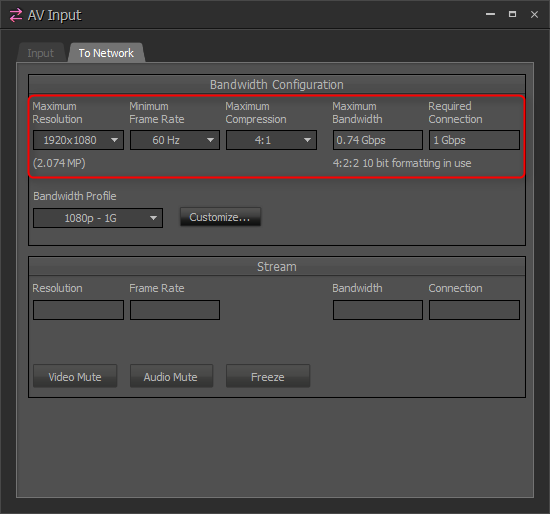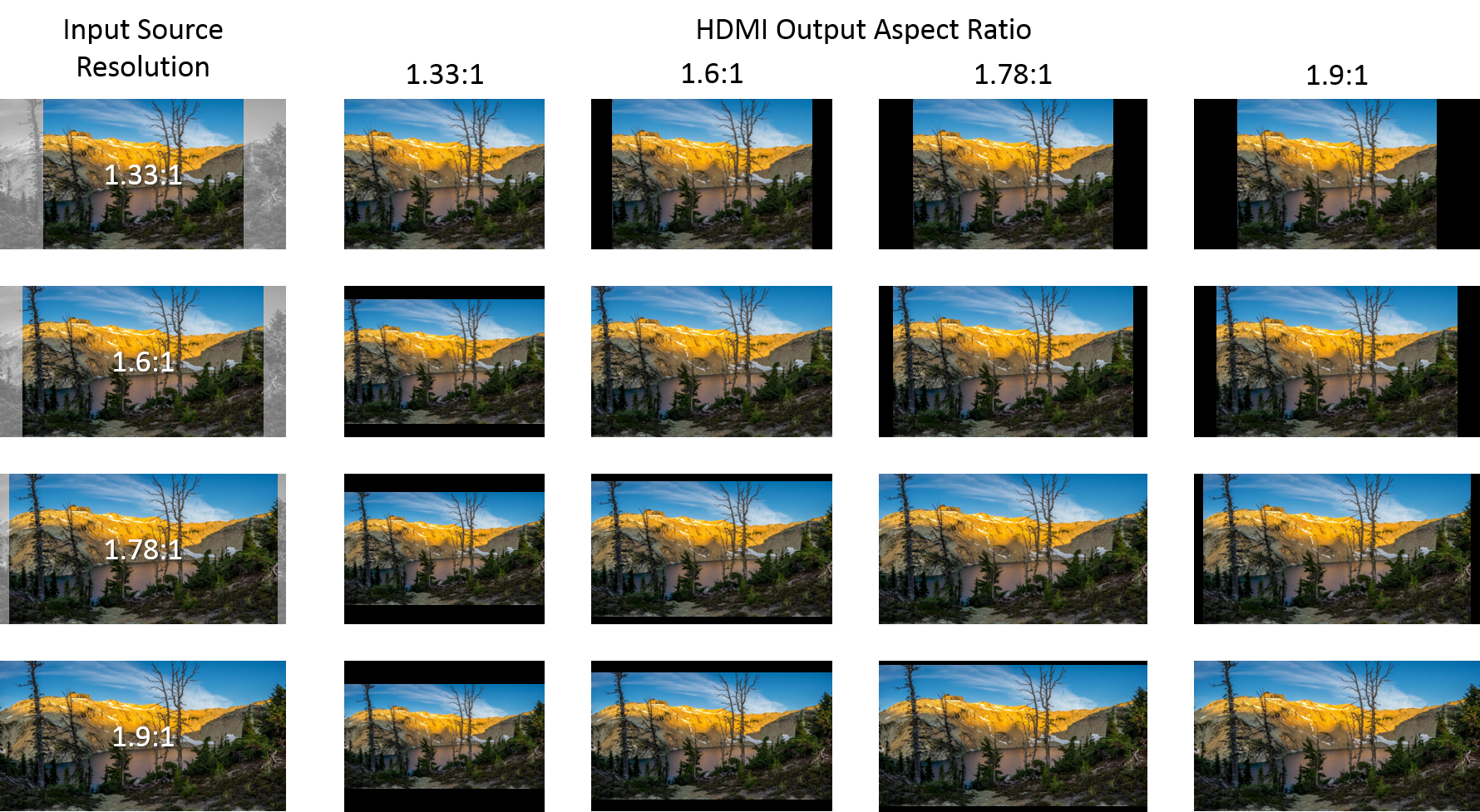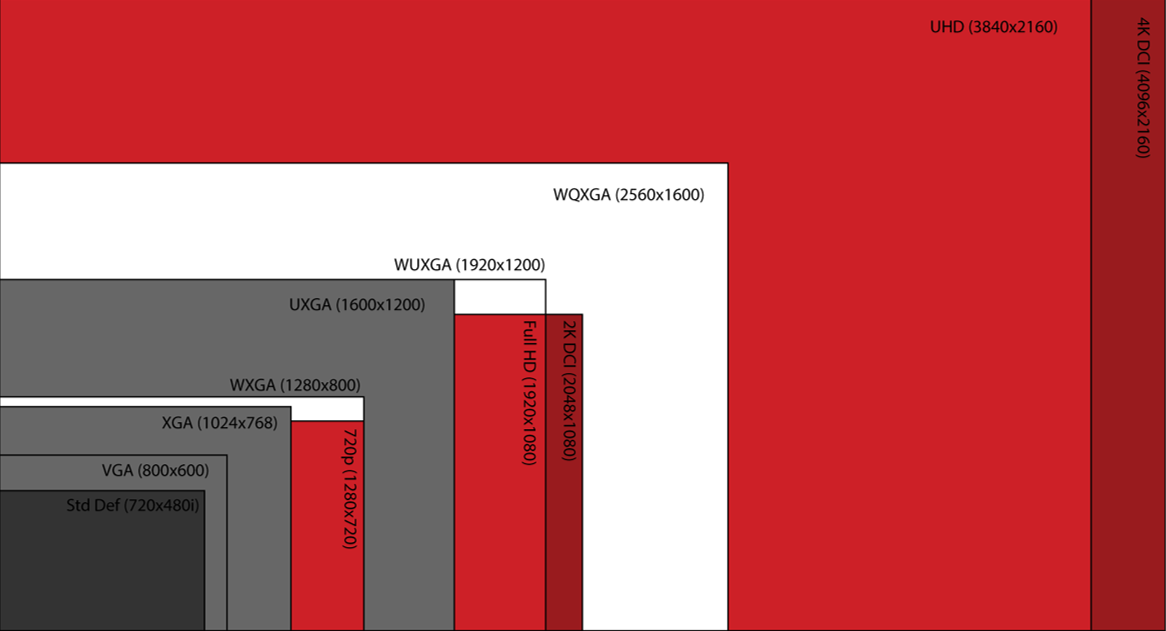Aspect ratios and scaling in TesiraLUX
The aspect ratio of an image is the ratio of its width to its height. Since aspect ratio is directly related to resolution, changing the resolution can often affect the aspect ratio of an image. Ideally, the resolution of the source would match the resolution of the display, in which case no scaling is necessary and there's no image loss. When resolutions don't match, some scaling must be done to make the picture fit in the display resolution. Depending on how the scaling is done, part of the image may be cut off or bars or pillars may be added.
If scaling is necessary, TesiraLUX will maintain the aspect ratio of the image to ensure that there is no image loss or geometric stretching distortion. This article explains the scaling process in TesiraLUX.
Resolution and aspect ratio
Resolution is the number of picture elements or pixels per line by the number of lines in the image. So when we say an image has a resolution of 1920x1080, each line will have 1920 pixels and the image will contain 1080 lines. These measurements also define the aspect ratio of the image as this is the ratio of the width to the height of the image. In this particular case, our 1920x1080 image will have an Aspect Ratio of 1920/1080 = 1.78:1 This can also be expressed with integer numbers as 16:9. The following image shows the most common resolution in use. Common colors indicate resolutions that share the same Aspect Ratio
Scaling in TesiraLUX
Scaling is the process of changing the resolution of a signal. As such, we can talk about downscaling when the resolution is reduced or upscaling when it is increased. In a TesiraLUX system, this process can happen both at the input (IDH-1) or output (OH-1) because both devices have a broadcast quality scaler. This is how TesiraLUX can send the same video stream to multiple outputs of differing resolution.
Scaling at the AV Inputs
W hen we establish the bandwidth configuration parameters in the IDH-1's AV Input block in Tesira software, we set up a maximum resolution to send over the network. We can think of this as a "fence" or boundary we can't cross. Ideally, this should match the device or signal connected to the IDH-1 to avoid scaling but that is not always the case.
hen we establish the bandwidth configuration parameters in the IDH-1's AV Input block in Tesira software, we set up a maximum resolution to send over the network. We can think of this as a "fence" or boundary we can't cross. Ideally, this should match the device or signal connected to the IDH-1 to avoid scaling but that is not always the case.
These are the potential scenarios:
- Source resolution matches the resolution settings in the IDH-1: No scaling is performed to the signal
- Source resolution is lower than the resolution settings in the IDH-1: The IDH-1 does not do any upscaling to the signal. Signal is transmitted at the received resolution
- Source resolution is higher than the resolution settings in the IDH-1: The IDH-1 in this case will downscale the image to make it fit in the defined fence. This process is done in such a way that the Aspect Ratio of the incoming signal is preserved and there is no image loss or image stretching. If the incoming signal has a different aspect ratio, the transmitted signal will be at the highest resolution that fits within the fence defined by the settings in the IDH-1 block.
Scaling at the AV Outputs
The output resolution in the OH-1's AV Output block in Tesira can be set to detect the HDMI monitor's preferred resolution using EDID. We can think of this as the target resolution at the output so any incoming AVB stream will be scaled to fit that output resolution. Ideally, we want this resolution to match the source but is not always possible. Some scenarios also involve switching between AVB streams which are different resolutions or different resolution devices may be attached to the system. In the case of the OH-1, preparing the signal has a two step process. The first is scaling where the stream will be upscaled or downscale as needed to fit the output resolution. The second stage adds bars or pillars to the HDMI output if the Aspect Ratio does not match the output resolution. Bars or pillars are generated by each OH-1 as needed to fit the stream to the HDMI output. The bar or pillar color is user adjustable by changing the Fill Color in the properties of the AV Output block.
Here are the potential scenarios:
- Stream resolution matches the HDMI resolution settings on the OH-1: No scaling is performed and no bars or pillars are added.
- Stream resolution is lower than the HDMI resolution out of the OH-1: AVB stream is upscaled to match the output resolution without changing the Aspect Ratio. If the aspect ratio of the stream does not match the output aspect ratio, the OH-1 will add bars or pillars to the image.
- Stream resolution is higher than the HDMI resolution out of the OH-1: AVB stream is downscaled to fit the output resolution without changing the Aspect Ratio. If the aspect ratio if the stream does not match the output aspect ratio, the OH-1 will add bars or pillars to the image.
The following table shows the resulting image given the sources aspect ratio and the output aspect ratio:



